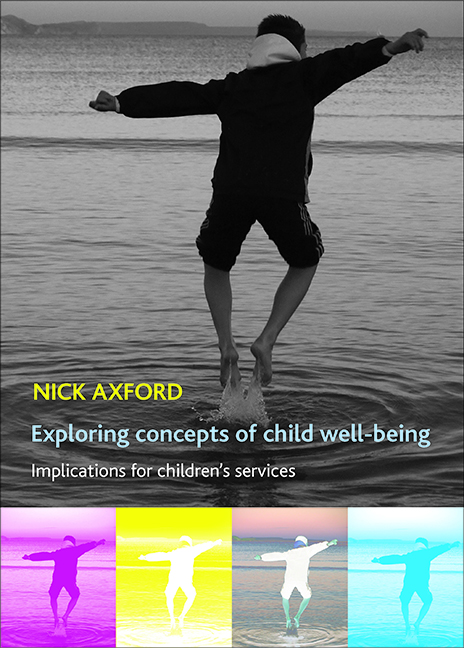seven - Relationships between the concepts
Published online by Cambridge University Press: 19 January 2022
Summary
The five concepts
Chapters Two to Six have looked in turn at how each of the five concepts of wellbeing is defined and measured. This chapter explores how far each one makes a unique contribution to the understanding of child well-being. It starts by aiming to get to the heart or essence of each concept (see Table 7.1). The exercise might be likened to distinguishing between personality types using techniques such as Myers-Briggs, which are based on the premise that pure types do not exist but the key traits of different personalities may be identified. So it is with the five concepts discussed here, and the task of separating them out offers analytic advantage.
Thus, a child is ‘in need’ if their health or development is actually impaired or likely to become so without some remedial intervention. This reflects an understanding of need as being concerned with ‘agency’ – the capacity to act in society and avoid harm. Needs are thus related to outcomes and in that sense should be defined and measured in terms of aspects of health (physical and psychological) and development (physical, behavioural, emotional, social and intellectual). People have needs in all areas of their lives, all connected with the ability to lead a minimally adequate life, and all objective, universal and timeless. However, the satisfiers that meet needs are relative, varying for example with climate, age and the standards prevailing in society. Subjective taste also has a role to play. Determining whether or not a person has unmet need requires a rounded appraisal of their situation, in other words some knowledge of the context. That said, the antecedents of a person's circumstances have no bearing on whether that person may be considered to be in need. Nor is the type of antecedent relevant: unmet need can reflect personal deficiency or structural injustice.
Rights are defined here as the resources, liberties and opportunities to which children are entitled. Violated rights are therefore identified by contrasting what a child is owed with how they have actually been treated by the person or body with the corresponding duty to assist or forbear.
- Type
- Chapter
- Information
- Exploring Concepts of Child Well-beingImplications for Children's Services, pp. 89 - 110Publisher: Bristol University PressPrint publication year: 2008

